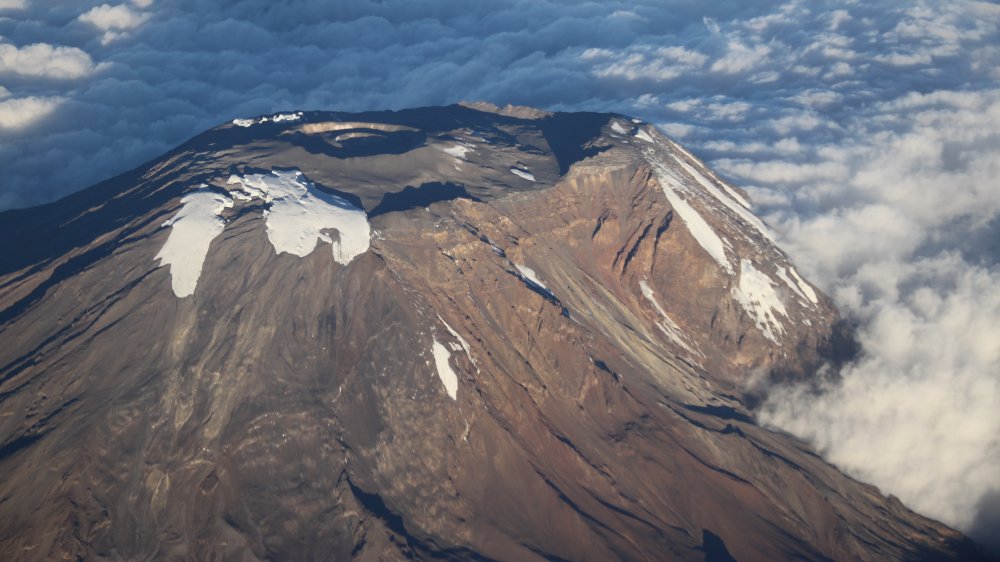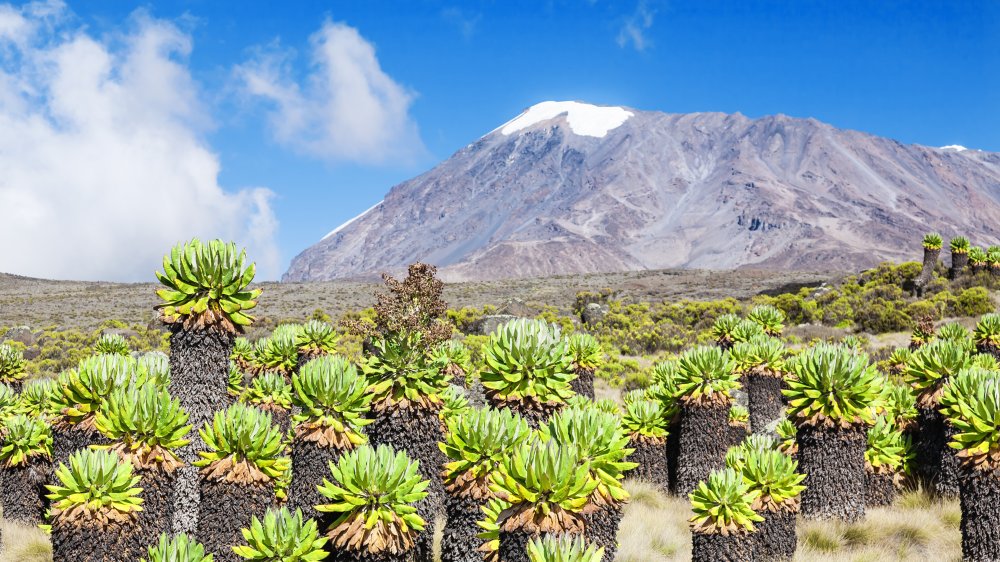Will Mt. Kilimanjaro Ever Erupt Again?
In many ways, the majestic Mount Kilimanjaro, in Tanzania, is in a category of its own. As National Geographic reports, the 19,340-foot colossus is the tallest mountain in Africa, and since it is not a part of any mountain range, it's also the largest freestanding mountain in the world. Oh, and it's also a stratovolcano, a giant volcano structure of rock, ash and lava. In fact, it's a combination of three such structures: the volcanic cones Mawenzi, Shira, and Kibo, the latter of which is the highest one, and the mountain's summit.
Sheesh, that's a lot of volcanic activity rolled up in one. Still, it's comforting to know that the mountain's last eruption was a fairly comfortable 360,000 years ago, and today it's known as a popular climbing spot. Surely, this means that the massive mountain's volcanic activity is pretty much extinct ... or is it? Is there a chance that Mt. Kilimanjaro will ever erupt again?
Mt. Kilimanjaro is sleeping, but might one day wake up again
Here's the good news. Mount Kilimanjaro's Mawenzi and Shira cones are decidedly extinct. However, the bad news is that the third and tallest one, Kibo, decidedly isn't. Kibo is merely dormant, and it's not outside the realm of possibility that it could one day erupt again.
So, what's the risk of that happening? Does Tanzania (and, for that matter, the world) have to face their own Mount St. Helens eruption somewhere down the line?
Fortunately, that's unlikely. Though there are several notable volcanoes that could erupt at any time, Mt. Kilimanjaro is unlikely to become an inspiration for a disaster movie in a hurry. That said, as Ultimate Kilimanjaro tells us, there is molten magma flowing a mere 1,312 feet under the mountain's summit, so it's not out of the question that it might one day erupt, or that Mt. Kilimanjaro might even collapse under its own, massive weight. However, this is far from an immediate problem, because scientists have not reported any signs of an impeding eruption.
Still, the brave people climbing for the summit may well notice the smell of sulfur once they start nearing the top, which could be pretty scary if they're familiar with the mountain's history.

